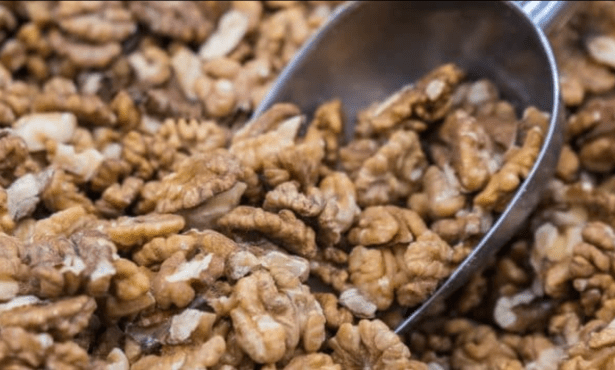Cottage Hospital Sounds Alarm as Santa Barbara County Sees Spike in Fentanyl-Fueled Overdoses
Addiction Services Director Dr. Paul Erickson Says Overdose Deaths Could Reach 160 By Year’s End

Cottage Hospital is joining Santa Barbara’s chorus of high-octane concern over the accidental and inadvertent consumption of fentanyl and how it’s leading to drug overdoses and death, especially by young people just starting to experiment with drug use.
At the current rate of opioid overdose deaths, Santa Barbara County could easily experience 160 overdose deaths by year’s end, said Dr. Paul Erickson, Cottage Hospital’s Medical Director of Psychiatry and Addiction Services. Last year, the total number was 133. As of June this year, the number of overdose deaths was 91, of which 46 were fentanyl related.
Fentanyl, Erickson said, is an equal-opportunity afflicter when it comers to gender, race, and income, but younger people — less experienced in titrating their drug use — are more inclined to overdo it, he said. And with fentanyl — famously 100 times stronger than morphine and 50 times stronger than heroin — it doesn’t take much, just the equivalent of three grains of salt, to kill someone.
Narcan, the drug used to save someone actively overdosing, is available and free at several locations in the county, including Santa Barbara Behavioral Wellness, Pacific Pride, UCSB, and CVS.
Not only is fentanyl stronger that regular opiates and more addicting, Erickson said, but it’s also really cheap and pretty much everywhere. “We find it in pain pills like Percocet, oxycodone; we find it in cocaine; we find it in methamphetamine. People wind up taking it without intending to.”
Even marijuana, he said, can be laced with fentanyl. “It’s rare, but it’s happened,” he said.
To date, Erickson said, he has not heard of LSD or mushrooms being cut with fentanyl. Fentanyl test strips, Erickson stressed, are strongly advised for anyone experimenting with pretty much any substance.
According to a statement from Cottage, early signs of a problem with opioid medications can include taking prescribed drugs for longer than recommended, needing higher doses to get the same pain relief, and seeking medications from other people or illegally on the streets. Those who believe a loved one is suffering from an opioid use disorder, the statement says, should be on the lookout for for behavioral changes such as isolation from family and friends, increased conflicts in relationships, problems at work or school, money issues, or selling of possessions.
What makes fentanyl even more challenging, Erickson added, is that it takes longer to physically withdraw from. A heroin and other opiates, he said, usually take three to five days for physical withdrawal. With fentanyl, it takes closer to 8-10 days. Because fentanyl is stored in the body’s fat, it takes longer to expel.
Sign up for Indy Today to receive fresh news from Independent.com, in your inbox, every morning.
Typically, suboxone is used to help addicts kicking traditional opiates avoid withdrawal symptoms, but with fentanyl, it has to be administered in smaller doses over a longer period of time. If not done properly, Erickson said, patients could find themselves going through withdrawals.
Cottage offers an inpatient medically supervised detox unit at its Santa Barbara hospital, as well as a traditional residential program known as Cottage Residential Center. And there are intensive outpatient programs in Santa Barbara and San Luis Obispo. But one challenge confronting Santa Barbara medical community, Erickson said, is a lack of spaces for medically assisted withdrawal relative to the demand.
“We have people calling, and we have to tell them we have no beds,” he recounted. “It’s hard to ask them to call back.”
Cottage is partnering with Project Opioid, an effort launched by Sheriff Bill Brown to enlist heavy hitters from Santa Barbara’s medical, educational, inter-faith, nonprofit, and law enforcement communities into a unified campaign — “Fentanyl Is Forever” — against the drug. Part of the problem is fentanyl’s ubiquity and unpredictability. “It’s not like there’s any reliable quality control here,” Erickson stated. “You never know how much is safe.”
The fentanyl crisis emerged about the same time the nation found itself engulfed in the forced isolation of the COVID pandemic. Addiction rates soared. At Cottage, he said, addiction consultants provide services throughout the entire hospital. In the month of July, these consultants found 181 patients — “They could be showing up for gallstones,” Erickson said — had addiction issues from alcohol to opioids. For 45, those issues were opioid specific. Of those, seven had overdosed, and 16 had received suboxone.
Erickson’s message is that services are available for people who find themselves struggling with addiction issues. He acknowledged many addicts and their families experience difficulty and confusion trying to access the help that’s available. One idea now under consideration, he said, was the creation of a navigation service to help families better connect.
“The navigation concept is one that Project Opioid is very interested in,” he said. “It’s under discussion, but there is no operational plan at this time.” To find a treatment provider, visit the Santa Barbara Opioid Safety Coalition’s website.
Support the Santa Barbara Independent through a long-term or a single contribution.




You must be logged in to post a comment.